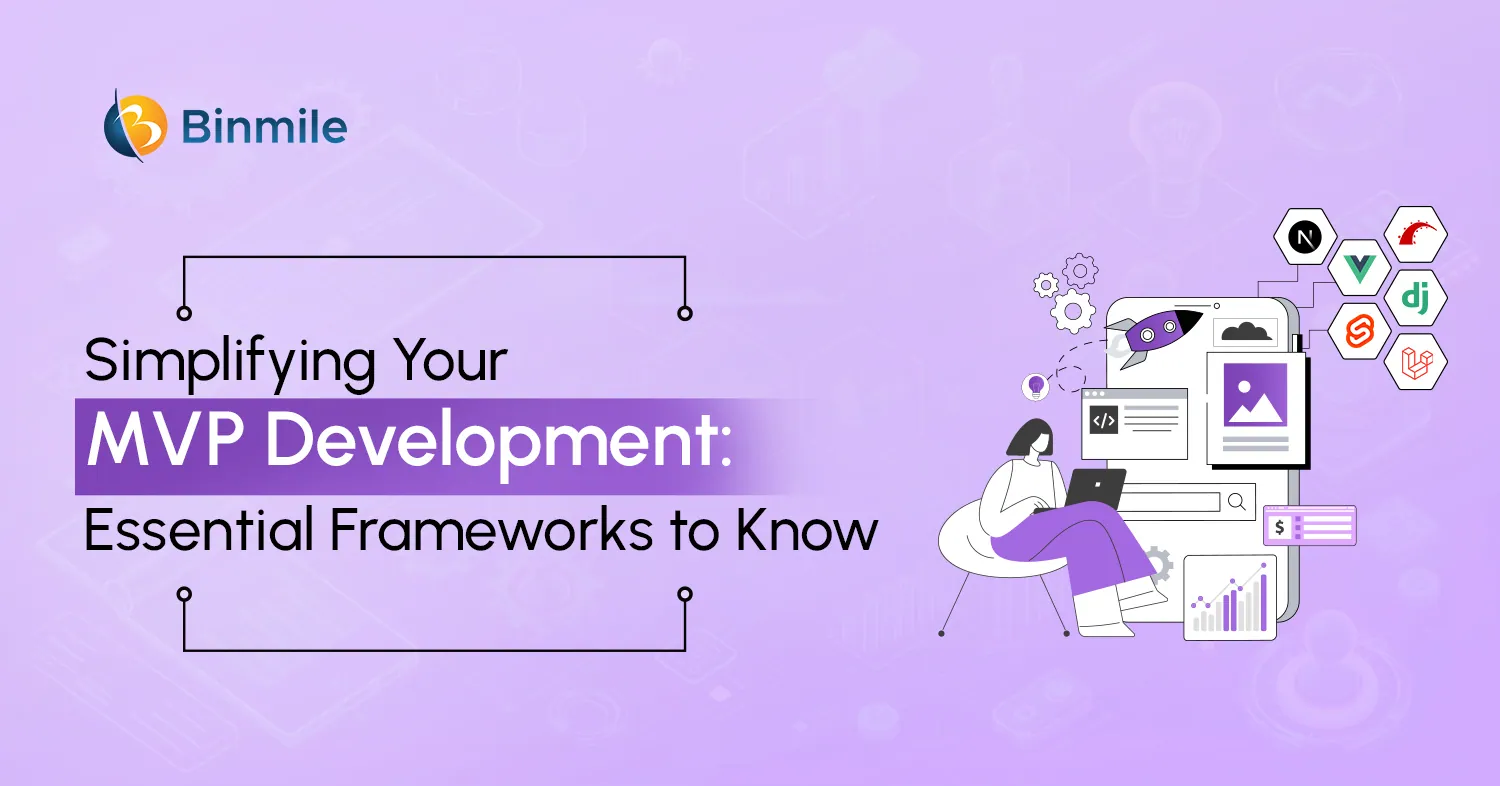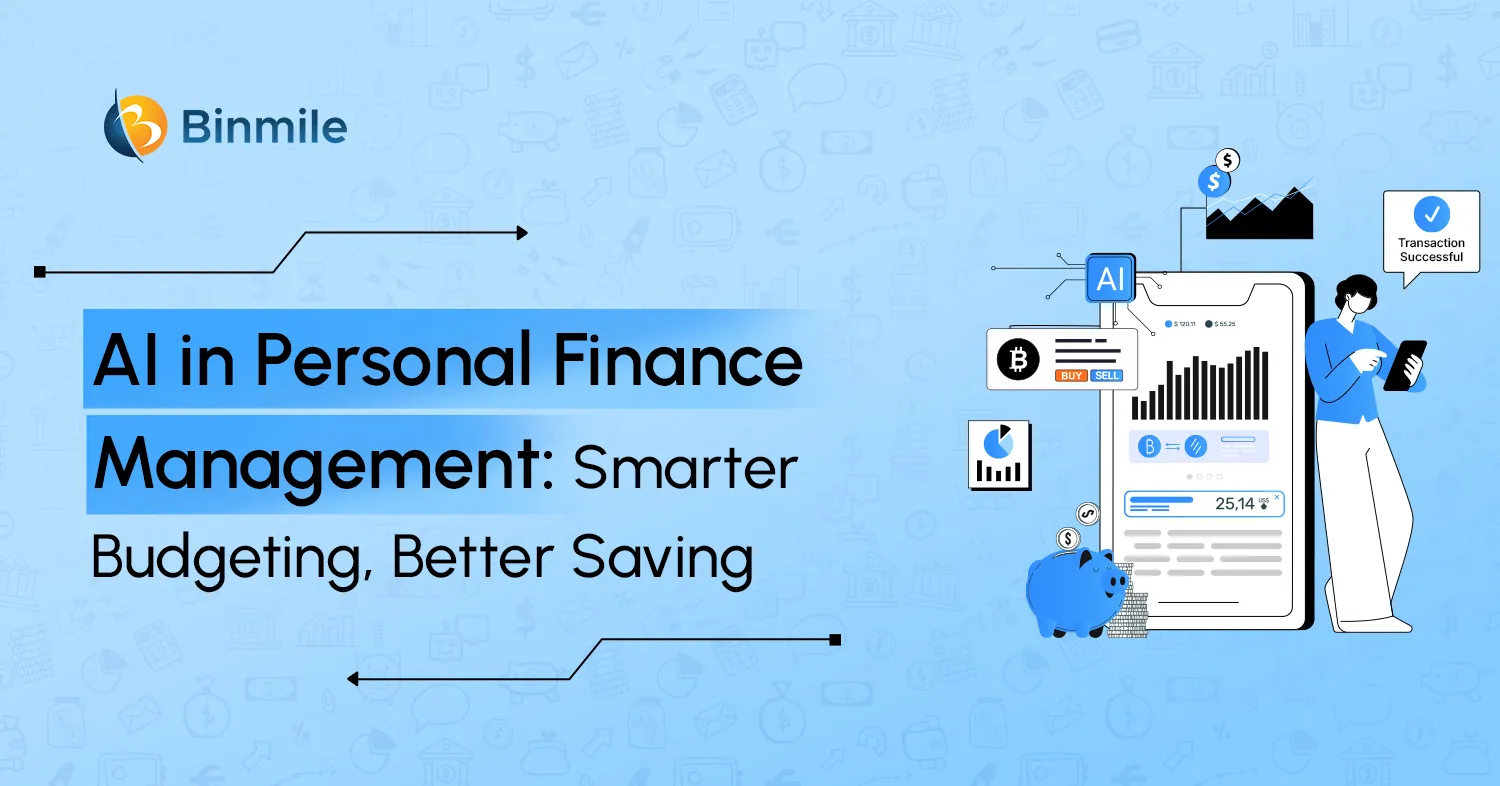With the advancement of the digital explosion in our daily lives, the banking and finance industries have also changed in response to the evolving user base, which is mobile-driven. Reports from Think With Google indicate that 51% of smartphone users will likely use it. Now imagine not tapping on these potential prospects because you don’t have a banking mobile application?! Mobile banking apps facilitate peer-to-peer transactions, wire transfers, and other bank operations with just a click.
Therefore, banks and financial institutions must capitalize on custom banking app development and personalized apps for banking solutions to keep up with the market competition. Before you start the development journey there are certain trends and elements your mBanking app must have. So, let’s look into the major trends influencing mobile banking app development today and in the future!
Top Mobile Banking Trends to Watch
1. Cardless ATM Service
Cardless ATM Services have become increasingly popular in recent years as more banks offer their customers the convenience of withdrawing cash without ever having to swipe a physical card. With this technology, all you need is your phone—to either access an app or scan a QR code—and you’re instantly connected with your bank account to make withdrawals. Research estimates the cardless ATM market is expected to grow by $2.11 billion by 2026.
This innovative service also helps reduce the need for plastic cards that can be lost or stolen, making banking transactions much safer and more secure. Additionally, the use of Cardless ATM Services makes it faster and simpler for customers to get their cash quickly so they can be on their way. All in all, Cardless ATM Service is revolutionizing the banking industry with its combination of convenience and security.
2. Biometric Authentication
The mobile banking landscape is constantly evolving, and biometric authentication is one of the latest trends gaining popularity. Custom web app development services now offer fingerprint and facial scanning as added security measures for their customers. This type of authentication ensures secure access to mobile banking services because it requires a person’s physical characteristics to gain access. Research and markets estimate that the global market for biometrics for banking and financial services will reach $8.9 billion by 2026, up from US$4.4 billion in 2020.
By using biometric authentication, mobile banking is becoming a safer mode of conducting financial transactions. With the increased convenience and safety that comes from this new method, mobile banking via biometric authentication has rapidly gained popularity among mobile users and businesses alike.
3. AI-Powered Customer Service
Incorporating bots into mobile banking apps is expected to be the primary channel for the adoption of conversational technology in the future. Research indicates chatbot interactions will reach 79% in 2023.
mBanking apps for BFSI are utilizing this new technology to improve customer experiences by leveraging artificial intelligence and machine learning algorithms to anticipate customer needs. This enables mobile banking customers to get instant support for their basic requests, as well as access personalized offerings and advice with ease.
Furthermore, mobile banking customers can have more efficient communication with the bank through AI-enabled virtual assistants because the technology has advanced far enough for them to recognize the human tone and natural language. These mobile banking trends make it easier for customers to interact with their bank from their phones and get faster responses than ever before.
4. From Mono-Functional to Super-app
As mobile banking trends continue to evolve, it is becoming increasingly clear that mobile banking apps like Chime are essential for banks. But now customers want to do more with their banking apps and not be limited to basic features offered by internet banking. They want a full-fledged channel of access to all banking products. The future outlook suggests creating an ecosystem of financial features and services that are personalized around the user’s needs.
So, try offering features like bill payment alerts, settle accounts, expense tracking, budgeting, loan payments, online shopping, or ordering online services such as booking a cab or paying for a public transport, among others. Furthermore, when your mobile banking apps offer other non-banking-related services mentioned above, your bank becomes more connected with customers across various channels, thus boosting the top and bottom lines in the future.
5. Blockchain Technology
With mobile banking becoming more popular, blockchain technology is emerging as a key tool for banks to leverage. Blockchain technology gives mobile banking app users a chance to securely make transactions by eliminating the need for physical third parties. As of 2021, Statista reports 68.42 million blockchain wallets worldwide.
Blockchain technology in financial services allows for the monetization of data securely, with statistical analysis playing a more prominent role in mobile banking services. Since the technology is built on cryptography methods, banks, and top fintech companies may much more easily guarantee the protection of sensitive data. Additionally, blockchain offers benefits like automated transactions and data authenticity.
6. Voice Payments
The latest banking trends have banks offering voice payment options in their online banking applications, with AI in voice banking playing a pivotal role. Companies like Google, Amazon, and Apple have paved the way for creating a frictionless authentication process allowing consumers to make purchases through the mobile banking app using only their voice. Biometric authentication is also being used – via sensors embedded in mobile phones – to further improve security measures.
Gaining traction rapidly, custom mobile app development services are allocating resources to AI-driven voice banking technology to serve their customers better and ensure users are comfortable transferring money within a secure platform. Voice payment options, powered by AI, will continue to be at the helm of mobile banking innovations going forward, delivering accessibility, convenience, and features that differentiate from traditional mobile banking experiences.
7. AI, ML Technology
Initially, mobile banking was mainly focused on providing users with account balances or money transfers. However, mobile banking services now include targeted marketing campaigns centered around personalized user experiences and up-sell opportunities.
By leveraging the power of AI and ML technology, online banking applications are able to increase the consumer’s overall mobile banking service experience, offering them targeted and contextual suggestions for products that meet their specific needs. These features create a more personalized mobile banking experience for the consumer, which results in an improved customer experience overall.
8. Gamification
Regardless of what features you offer in your mobile banking apps, if it’s not easy to navigate or engaging enough, you can’t retain your users. With gamification elements, (a method of including game-like elements in web and mobile apps). You can infuse interactive and immersive elements into the app, and imbue users’ banking experiences with a sense of amusement and entertainment, fostering heightened engagement.
For instance, let users earn points as they complete tasks, like splitting a bill with a friend or spending money abroad. Or earn virtual awards for reaching key milestones or showing good money habits, and maybe when they engage in specific financial behaviors. Doing so will not only make interacting with your app more fun but also make you relevant, increase the conversion rate, and bring in new customers.
Bring convenience to your customers’ fingertips. Connect with our app development experts for tailored solutions that drive user engagement and growth.
The Future of Mobile Banking Apps
It is quite reasonable to assume that there is no age-specific target group for a simple, easy-to-use, and quick experience managing finances. But what is the broader outlook for the mobile banking sector?
An Insider Intelligence market study on mobile banking indicates that 89% of the total respondents said they prefer mobile banking instead of traditional banking methods. It is difficult to overstate the pandemic’s impact on the use of mobile banking apps. However, the growing inclination of customers towards banks with the best mobile apps is noticeable.
Six out of ten smartphone users, according to Google, prefer utilizing a banking app rather than a mobile website to handle their accounts. It’s a simple way for users to meet their non-essential demands without troubling the bank, for example, checking the balance or carrying out an emergency transaction.
However, many users become accustomed to utilizing mobile banking apps as a result of their importance and convenience. Research estimates indicate there will be 217 million users of digital banking in the US by 2025.
Also Read: AI Voice Banking for Customer Services
Conclusion
There’s no doubt mobile applications have become the lifeline of all industries. Therefore, mobile banking apps have been helping financial services providers reach out to a multi-billion-strong audience of smartphone owners. The key to offering a digital banking service or product is to listen to users, feel their problems, and have a desire to solve them. Thus, stay updated and embrace the latest trends and technology in the market. Trends help you achieve that as you fulfill the needs of new-age individuals.
But where to start? The best way to achieve this is to connect with the top app development companies. When it comes to effective custom mobile app development services, our app development services experts are your one-stop solution. With expertise in custom banking app development, they can help you grow your business and boost user engagement with the assistance you need. Now, get the best in digitizing your banking services today!
Frequently Asked Questions
A Mobile Banking App is a smartphone application provided by banks or financial institutions that allows users to perform various banking transactions and access banking services directly from their mobile devices.
Common technologies used in Mobile Banking App Development include:
- Programming Languages: Java/Kotlin for Android, Swift for iOS, JavaScript for cross-platform development.
- Mobile Development Frameworks: Android SDK, iOS SDK, React Native, Flutter.
- Backend Development: Node.js, Django, Express.js, Firebase.
- Database Management: SQLite, Realm, Firebase Realtime Database, PostgreSQL.
- Security Technologies: SSL/TLS Encryption, OAuth Authentication, Tokenization, Secure Remote Password Protocol (SRP).
- APIs: Banking APIs, Payment Gateways, Location Services, Push Notification Services.
Future trends in Mobile Banking include:
- Biometric Authentication: Increasing use of biometric authentication methods such as fingerprint recognition, facial recognition, and voice authentication for secure and convenient login.
- Artificial Intelligence (AI) and Machine Learning (ML): Adoption of AI and ML algorithms for personalized financial advice, fraud detection, credit scoring, and customer service automation.
- Chatbots and Virtual Assistants: Integration of chatbots and virtual assistants powered by AI to provide instant customer support, answer queries, and assist with transactions.
- Voice Banking: Rise of voice-activated banking services allowing users to perform transactions, check balances, and manage accounts using voice commands through smart speakers or mobile devices.
Mobile Banking Technology refers to the digital infrastructure, software platforms, and communication protocols used to facilitate banking services and transactions through mobile devices such as smartphones and tablets. It encompasses a range of technologies including mobile applications, backend systems, security protocols, and communication networks designed to enable users to access their bank accounts, perform financial transactions, and manage their finances on-the-go.
Generative AI can analyze market data and trends to assist in making investment recommendations in the context of gen AI in banking. However, it should be used as a tool to support human decision-making rather than replacing financial advisors, who can provide context and expertise.









